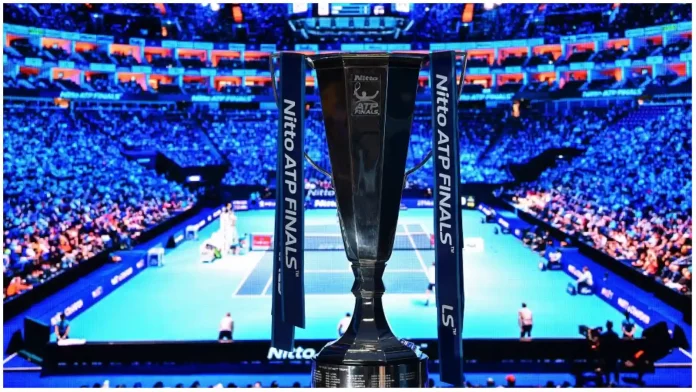The ultimate ATP season end, lands on the ground of the Nitto ATP Finals every year. The ATP Final features World’s top eight players in singles and doubles. Out of which, the table toppers will advance into the semi-finals, followed by the finals. Let us get a complete overview of ATP Finals Rules, Format, Criteria, Winners, Points Systems and everything you need to know.
History
This tournament began in 1970, named, the Masters Grand Prix, which was organised by the International Lawn Tennis Federation (ILTF). This title lasted long till 1989, afterward, in 1990, it was renamed the ATP Tour World Championships. It was the time, in 1990, when the ATP took over the men’s tour, therefore taking over the title too.
But, immediately, after nine years under the ATP, both ATP and ITF eventually agreed to rename it the Tennis Masters Cup and administrate it themselves. Then in 2009, history took a turn and yet again the title was renamed the ATP World Tour Finals. Currently, from 2017, it is named the ATP Finals for a consecutive fifth year. In 2019, it was confirmed that from the year 2021 till 2015, Turin will host the ATP Finals.
For most of the years, the Finals have been played on indoor hardcourts except for a few early years. In 1974, it was an exceptional year in which the Finals were conducted on the grass court in Melbourne.
A glimpse of the 2021 ATP Finals final between Alexander Zverev and Daniil Medvedev.
ATP Finals Format
The ATP Finals works on round-robin criteria, parallel on two groups of four players. Each competitor will play a round-robin with the other three. Finally, the top two players of each group will advance to the semi-finals. Dissimilar to other ATP formats, here the second-positioned player from group A will compete against the top player of group B and vice-versa.
Grouping is performed on the basis of pair-draw, meaning, World No. 1 and 2 will be in groups A and B respectively. Followed by, 3-4, 5-6, and finally 7-8, concluding, Group A comprise World No. 1, 3, 5, 7, whereas Group B has 2, 4, 6, 8.
Criteria
A player to qualify for the ATP Finals has to go through certain criteria. Firstly, the individual will automatically qualify if ranked within the top seven in the ATP rankings in the last week prior to the beginning of the Finals. Secondly, for the eighth player to qualify it wholly depends upon winning a Grand Slam the particular year. Also, must be a top 20 player in the world rankings.
Furthermore, if an individual does not own a Grand Slam and still ranks under the Top 20 will qualify as the 8th competitor. Nevertheless, players with more than one Grand Slam are prioritized on basis of their respective rankings.
An alternate player also tours throughout the Finals for a fortunate in place of any player withdrawing or injured.
Winners
Roger Federer is the most dominating champion in the ATP Finals thrice winning consecutive two years. The second position-holder with the most ATP Finals win is the Serbian and 21-times Grand Slam champion, Novak Djokovic. Of which, Novak recorded wins for consecutive four years from 2012 to 2015.

Djokovic ties the place with the great Czech player, Ivan Lendl, winning consecutive three years (1985-1987). Equally placed in the second position is the American Pete Sampras during the years of the 90s.
However, the previous six years were the period in which the ATP Finals got all distinct winners, except, Alexander Zverev, the 2018 and 2021 champions.
| Year | Champions |
| 2016 | Andy Murray |
| 2017 | Grigor Dimitrov |
| 2018 | Alexander Zverev |
| 2019 | Stefanos Tsitsipas |
| 2020 | Daniil Medvedev |
| 2021 | Alexander Zverev |
Rules
There are other certain rules which impact the group standings. The principle rule stands with the most matches won by a player will lead the table. However, despite even winning 2-0 matches, the competitor of the same group with 2-1 will be entertained more than him.
When two players tie, head-to-head records are counted based on the round-robin. Whereas, on three players with a tie will lead to concluding over same factors: highest % games won or the highest % of matches won.
Point System
With each win, the respective player gets 200 points, followed by, 400 points on winning the semi-final. Ultimately, 500 points on securing the trophy and the title. All these points will be reflected in the ATP ranking points table.
Check more on: Roger Federer announced his farewell in the Laver Cup 2022
Have a nice day ahead!

